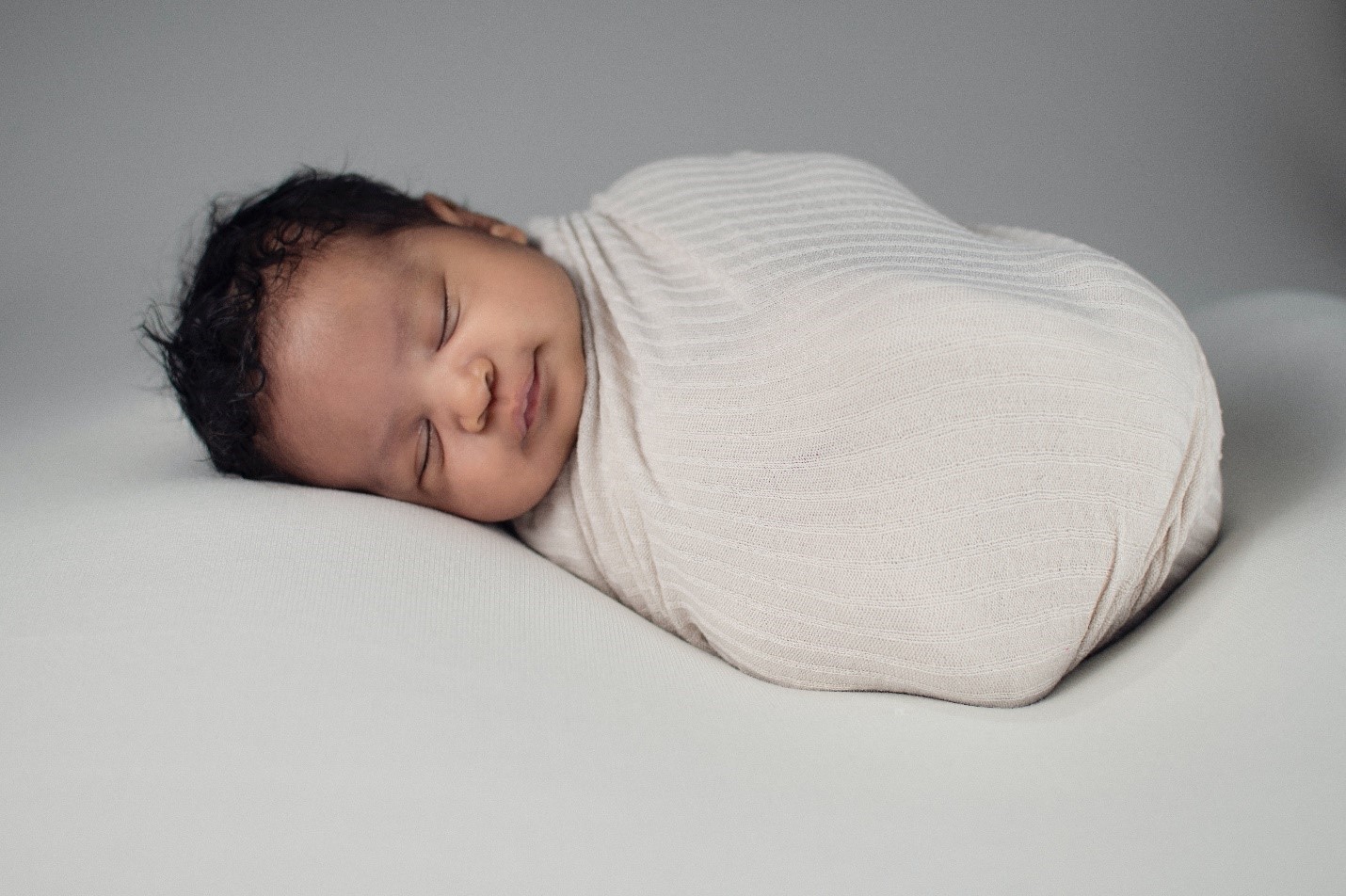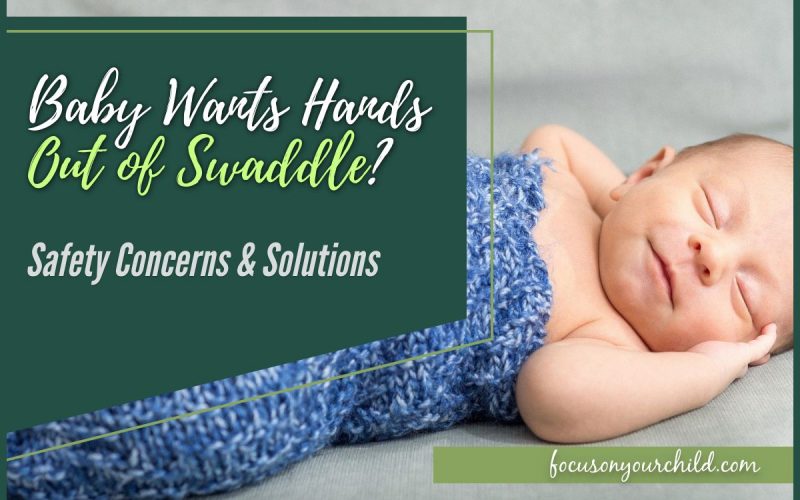Since swaddling is a common method used to calm infants, it can be quite distressing when the baby wants hands out of swaddle. While this may not seem risky at first glance, there are some safety concerns that parents should consider before removing any restraints from the infant’s body.
While swaddling confers several benefits to newborns, some babies just fight their way out to stick their arms out of the swaddle. Of course, parents want to keep the swaddle secure as a loose blanket can pose risks towards injury, lack of temperature regulation, and even strangulation. Fortunately, there are ways parents can go about this safely.
This article will discuss the safety concerns and solutions when the baby wants hands out of swaddle.
Why Swaddle Babies in the First Place?

Swaddling is a traditional method used by parents to calm their infants. The goal of swaddling is to make the baby feel secure and comforted, similar in ways that they felt while still inside the womb. It mimics the tightness of being held close by mom or dad. Aside from having a proper baby sleep program, swaddling significantly aids in getting babies to fall asleep.
There are many benefits to swaddling. Swaddled babies feel more secure and cozy than unswaddled infants, and they sleep longer as a result of reduced startling from startles or twitches during REM (rapid eye movement) sleep – the deepest stage of sleep.
Swaddling can also reduce pain for infants who suffer from colic due to digestive issues because it provides them with pressure on their bellies that eases discomfort, similar to what the baby felt when inside the mother’s womb. In addition, studies have shown that swaddle therapy is an effective method in helping preemies grow stronger and getting long hours of sleep.
Why are Babies Trying to Escape Their Swaddle?

Most infants love to be swaddled, while others can’t wait for their hands and arms to get out of the restraint. As babies grow, they become stronger in their muscles that are no longer flexible enough to bend into a tight or enclosed space like before when it was safe because they were still developing.
For some infants, it’s a challenge to get used to being unswaddled. In most cases, babies that have been swaddled since they were born will begin protesting at around three or four months old when their muscles become stronger and more developed than before – especially if they were always swaddled very tightly. Thus, it is important for parents to monitor for signs that their baby wants hands out of swaddle.
Safety Concerns
1. Injury
There are some safety concerns with unswaddling your infant. As stated before, once babies start to become mobile and more aware of their surroundings, it becomes dangerous if they have access to use their arms or legs freely without any restraints on them since they can roll around anywhere at any time, which could lead to injury.
Babies’ main goal is to learn how to control their movements as early as possible because being able to move increases the chances of survival in infants that are born prematurely or sickly. Growing up, they begin to explore how to control their body – the primary reason why parents notice their baby wants hands out of swaddle.
Parents should always be present and should never leave an infant alone for even a brief moment until they are old enough where they can be trusted not rolling themselves over onto their stomachs while sleeping. This way, parents don’t have to worry about anything since they are right there with the baby.
Babies who have been swaddled for a long time will also complain when their arms or legs get free because it feels awkward at first without being restricted, which is normal behavior after years of having hands and feet tightly bound together.
2. Lack of Temperature Regulation

When babies are unswaddled, they might feel cold due to the lack of full-body contact that was provided by the tight wrap around them while still in the womb. When this occurs during sleep, infants can become restless if their bodies don’t keep warm enough until parents return, so they may need an extra blanket over them temporarily.
3. Strangulation or Asphyxiation
Swaddling beyond infancy, especially those that use blankets as a swaddle restraint, has been reported as potentially dangerous because some parents leave their children alone without realizing they could not free themselves from suffocating if they accidentally rolled over onto their stomachs and are unable to roll back on their backs again.
Kids who can’t sit up yet are also at risk for suffocation when left unattended with loose bedding or blankets around them. They could get stuck underneath them while moving about freely.
Solutions
1. Swaddle Them Correctly
When swaddling your infant, it is important to take the time and practice a few times until you feel comfortable with doing so. There are some brands that sell pre-folded fabric wraps or sacks for those who find them difficult to do.
If parents want their child’s arms inside of the wrap as well, make sure their hands are placed in front, not behind. This is more comfortable when getting into position before wrapping securely around both arms together just like a mummy without risking suffocation if loosened too much during sleep.
2. Have The Correct Sized Blanket
When swaddling your baby, you need to have the correct sized blanket that will not be too loose or too tight for them. It should also cover their entire body sufficiently, so they are warm throughout all hours of sleep and playtime.
A size larger than what is needed can become a hazard because it might unravel itself during sleep which could lead to suffocation if found over an infant’s face without being noticed in time since babies always move around when sleeping.
3. Swaddle Them a Little Tighter
Babies have a natural reflex that makes them fling their arms outwards if they feel like they are wrapped too loosely around the body. If you find this happening, it is best to wrap them tighter for security until you can figure out what size works better for swaddling purposes.
4. Don’t Let the Blanket Touch Their Cheeks

When swaddling your baby, it is important to make sure that the blanket does not touch their cheek, or else they will become annoyed by this sensation when wrapped up with them for too long, which can lead to crying if kept in place.
Having the blanket touch their cheeks can also fool the baby into thinking that it’s the breast. This can set off their rooting reflex and cause them to open their mouth in search of the breast when being swaddled – only to be disappointed and cry.
5. Experiment with the Positions of Their Arms
There are a number of different swaddling positions that parents can experiment with until they find one that works best for their baby. For instance, some babies prefer to have their arms up and over the head while others will have them down near their sides instead.
Experimenting with the different arm positions can let you know which position your baby hates and which position your baby loves. This is especially important when parents have reason to believe that their baby wants hands out of swaddle.
6. Try Swaddling Them with Their Arms Out
Another suggestion that parents have given on how to calm a swaddled baby is by having their arms out of the wrap while being wrapped up tight. It gives similar benefits in comparison to the traditional swaddling method with their arms inside, but it reduces the chances that they will get annoyed when being wrapped up too long.
Parents have also found this helpful when trying to calm swaddling down without having the baby fight for arm movement. You can also try swaddling them with only one arm out. This is a reasonable compromise for both the parent and the baby.
If these do not work, then it might be best to just keep them as they are until your child adjusts better and can finally sleep soundly with both arms inside of the blanket at nighttime for security reasons.
7. Consider If It’s Time to Stop Swaddling
Swaddling past infancy can be effective for some babies, but others may no longer need to be swaddled by this age. If your baby wants hands out of swaddle and shows signs of rolling over, then it is recommended that you stop swaddling all together because they might just want freedom instead.
If parents decide to take away swaddling as an option for bedtime, make sure they also create a safe sleeping environment with tightly fitted sheets on top of a mattress without loose blankets in sight so infants cannot get tangled up in them.
